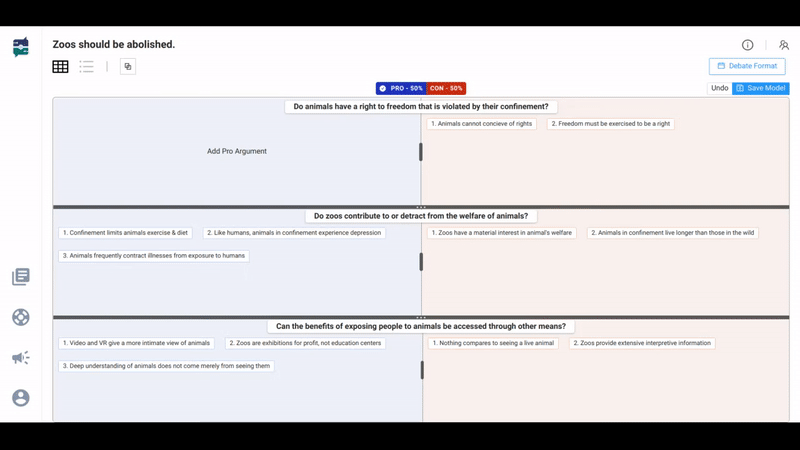
.png)
How it works
Argutopia is a digital platform for incorporating debating into any classroom. Grounded in established cognitive science, Argutopia has a number of unique features to help Instructors design, schedule, execute and evaluate debates.
Feel free to take a deep dive into our documentation for more details.
Choose from over 100 debate kits to get your students debating immediately, including current controversies and discipline-specific subjects
Support for live, in-person debates and asynchronous, threaded video debates (think FlipGrid) that minimize required classroom time
Automated assignment creation, including custom format design, student placement in debater and judge roles and arranging due dates
Structured audience deliberation designed to maximize the metacognitive value of debates for participants beyond the primary debaters
At the heart of Argutopia is our dynamic debate visualizer that makes students’ exchange of arguments more predictable and productive

Argutopia's visualizer makes debate easy
The visualizer structures students’ debate experience in three phases. You can use Argutopia to build assignments that include one, two or all three phases:
Before the debate
Before the debate begins, the visualizer illustrates the points of controversy to help debaters prepare their arguments.
Debaters may build their own arguments for their side and anticipate the arguments (and their response to the arguments) their opponents may make. Once the arguments are added to the visualizer, debaters can switch to the text view to access an outline for their speeches.
During the debate
During the debate, both audience members and debaters can record the arguments exchanged directly on their own visualizer. Each participant--debaters and audience members--can edit their own unique visualizer that reflects their interpretation of the debate.
Participants may also adjust the area allocated to each side and issue to reflect their perception of the strength of arguments and the significant of each issue.
After the debate
Once the debate concludes, students may be assigned to judge the debate, using the visualizer to explain their impressions of the debate.
Student judges may submit an individual visualizer reflecting their own perceptions and can work in groups to deliberate and reach consensus about a collaborative rendering of the debate's visualizer.
Deliberating about their perceptions of the arguments exchanged promotes students' metacognition and deep reflection on course content.